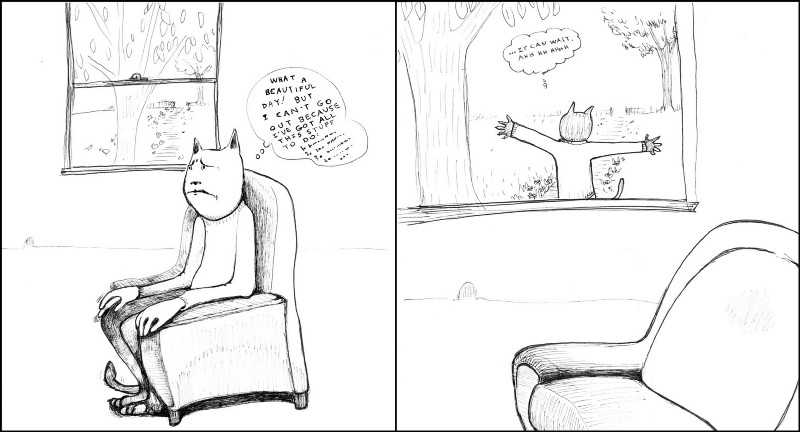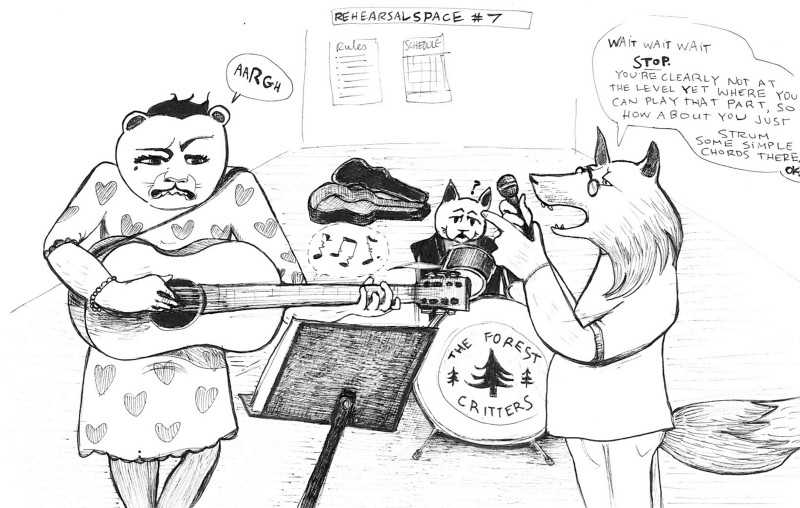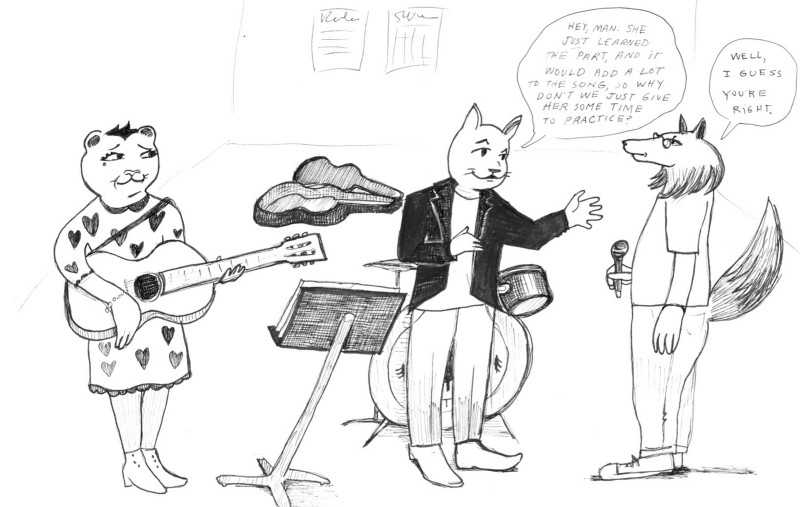… and stop doing things that make sense
Illustrations by Claire Bowman. Editing help from Kate Maurer.
I woke up yesterday, but felt like I hadn’t slept. A bunch of leftover work week worries bubbled up, stirred up by some good ol’ imposter syndrome (preparing for conferences will do that). Notifications buzzed from my phone in the other room. Sun dripped through the blinds — it was going to be a nice day. Then there was that moment of tension:
Do I get out of my head, go out, see friends, and enjoy the weather (which I know is 100% effective at making me feel better), or do I withdraw and spend the day working and mulling over my angst?
I often opt for the latter, with reliably poor results. Weird, right?
You’ve felt that before. Maybe not with work angst, but with something: picking the healthy food option, choosing to exercise after a long day at work, giving someone a second chance, checking to see if the stranger on the street is OK, or listening when you want to talk. Sometimes it is a simple case of short-term benefit versus long-term gain. At other times these small decisions cut straight to our fears, self-perception, and self-doubt.
Part of the brain is saying “You know the right thing to do! Push through! Take a risk!” But there’s that other voice saying “That’s hard! Keep the status quo! Make it go away! Time for dessert!” Should we do something that feels unnatural, dangerous, impractical, uncomfortable, worrying, challenging? Or do we just roll with it?
That uncomfortable moment is a sign. It’s a beacon.
We experience these small decision points every day — as individuals, in relationships and families, and as organizations and communities. But if we opt for one path repeatedly, the beacon fades to a faint blip, and our neural connections harden and stiffen. When that happens, we turn on the autopilot (also known System 1 thinking, or the aptly named lizard brain). In this mode, we act without thinking, and generally let our fears rule us.
Until that happens, we have a chance, because we sense that moment of tension. And that moment is an opportunity. Those small decisions add up.
What applies on the individual level also applies to how we work together in communities and organizations. The road to organizational dysfunction is paved with many common-sense, split-second, well-meaning, and very human decisions.
If you ask most people what they value in a work situation they will describe things like autonomy, diversity, open communication, challenge, honesty, coherence, a sense of purpose, and acknowledgment. Even more fundamentally, we require safety, trust, and respect.
Contact me for a higher res version. This is a work in progress.We set out with the best intentions, but go astray. Our many “common-sense” decisions result in outcomes that run counter to our values, and over time a stark incongruence settles like a fog. How often do we compromise on quality, or humanity, or diversity, or trust, or transparency? Often. And that is when things slip.
Some of these choices are automatic, and there’s no time to pluck the signal from the noise. But, in most cases, there’s that glowing beacon — that split second of tension and resistance — that indicates a better path is possible.
You’ll often know these moments just by the words you use. Do any of these snippets sound familiar?
You’ll have to do that, because, well…just because. Perhaps we shouldn’t share that information. It might anger people. Let’s be practical. There’s no way that will work here. How can we say no at this point? We’re in too deep! Well, it’s human to just be worried about your own quota. We can let it slip just this one time. No one will notice.You and your coworker probably know that you should NOT talk about someone behind their back. You know you SHOULD include them and get real, but habit kicks in. And there’s the challenge.
It’s human to buckle, and it’s human to take uncomfortable risks. It’s also human to delude yourself, but also human — and possible — to get to yes with yourself. We are simultaneously creatures of habit and creatures of insight.
Which is awesome, if you think about it. We’re not doomed to repeat our mistakes and send our organizations into an ugly spiral. The trick is to sense those moments — the spark, instability, tension, momentary fear — and go toward the discomfort. Adopt the beginner’s brain, and let that be your guide.
We can sniff out these opportunities because they have many common traits. You can help your teams learn to be aware of them. To hone their radar — not for a particular solution, not for “the way,” but for an opportunity.
At the core here we have a very human challenge, compounded by having LOTS of humans in the picture. One response is to call the steady slide some variant of the human condition, throw your hands up, and resign yourself to a steady drift into failure.
Another perspective — the one I’ve been taking lately — is that every decision is an opportunity: in our personal lives, in our work lives, and at the intersection of the two. We can turn to face the discomfort and move forward, or we can keep the status quo. In the process, we’ll mess up — that’s life. But it’s the meditative practice of sensing these moments of tension, acknowledging the path of habit and inertia, and taking the uncomfortable route that counts.
How can we, as individuals, be clear with ourselves, and then bring that to our organizations? It starts with emotional safety, and in the end requires facing our discomfort. But it is possible.






